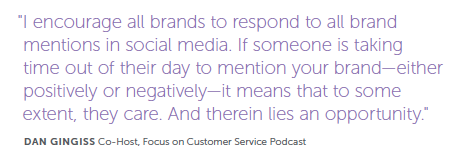
Social media is one of the most powerful ways to reach and engage with your buyers today. Because it’s almost universally used—by consumers and brands—it’s one of the most effective (and perhaps cost-effective) channels to connect with your audience.
Social media marketing offers marketers a vast opportunity to engage with their buyers, across the entire customer lifecycle, on the platforms they actively tune in to for information. So, it’s critical that, as a marketer, you know how to leverage social media marketing to build your brand, drive demand, and engage your buyers.
But let’s get real, social media is probably one of the most instantaneous ways that you can represent your brand—from voice, to promise, to personality—and with that capability comes a ton of responsibility. Social media, like many roles that manage customer- and public-facing properties, can sometimes get input and scrutiny from across the organization. We’ve all heard the saying, “Everyone is a marketer,” but I’d venture to say that even more people subscribe to “Everyone is a social marketer,” since many of us manage personal social accounts.
So, if you’re running a marketing function or looking to improve your social media strategy, it’s critical to build the right team to appropriately resource this critical function. This blog will look at three essentials of a social media dream team, from the team members you may want to hire to processes you should put in place.
1. Roles and Responsibilities
Social media marketing requires more than randomly posting interesting articles on Twitter or sharing funny memes. It takes real effort, especially if you want to work toward creating an integrated cross-channel campaign strategy. As you craft your social media strategy and define your goals, it’s important to consider your resource allocation. How many resources you will need to dedicate to social media marketing will depend on the following:
- Budget for new headcount
- Strategic goals
- Number of platforms utilized
- Weekly social time commitments
- Content strategy
- Current and future community size
The size of your team and the scope of responsibility will vary considerably based on your organization’s size and structure. In a large, global organization, social media responsibilities may sit across many teams and paid social advertising may be on a separate team.
For a consumer organization, you may have a lean team, but outsource the paid social advertising. Or, for a start-up, your social media headcount could be responsible for other areas of the business and not be able to fully devote their time to social media. With that in mind, here are some considerations, but keep in mind they won’t fit all situations:
- Consider starting by dedicating one full-time headcount for social marketing management. This person will spend his or her time mostly on community management, social messaging, content creation, best practices, and planning.
- Resource permitting, another full-time employee hire should be someone dedicated to creating content and who can serve as the managing editor for all of your content.
- Then, if possible to hire someone or contribute to a headcount of someone on your digital advertising team that is dedicated to driving effectiveness and toward your goals with paid social advertising.
As you can see, based on the first two suggested hires, it’s critical that your social media hire(s) should understand your audience, brand, and help define and uphold your brand voice on social and through content. Matt Heinz recommends looking for specific personality traits that can deliver on this.
However you choose to structure your team, it’s important that you cover the following responsibilities:
- Map to higher-level company goals
- Define social media marketing objectives
- Social channel optimization
- Content strategy
- Social campaign planning
- Social CRM segmentation
- Social scoring/nurturing
- Social analytics
2. Governance Board
In addition to your focused social media staff, you will want to create a social media governance board that is made up of executives, stakeholders, subject-matter experts, and key employee advocates. This is the team that determines your ongoing broad strategy goals and internal training initiatives, makes key decisions around your social media interactions, and serves as a chain of command for emergency situations. Your governance board should meet on a monthly or quarterly basis to reassess and innovate on processes and strategies.
Because social media marketing offers marketers a very immediate and personal connection with their audience, it’s important to remember that it’s all public—and sometimes that can cause concern. While your social media team can do everything in their power to make sure your audience and customers are happy on social media, inevitably you will run into a situation that needs a more immediate response—like an unhappy customer or group of customers. In that case, it’s vital that your social media governance board creates a social media escalation policy which will indicate who should respond and how. Dan Gingiss reiterates the importance of responding to brand mentions, whether they’re positive or negative.
3. Employee Engagement
While your social media team will do the heavy lifting, a strong presence of employee advocates on each channel will help strengthen your brand presence. At Marketo, we embrace social sharing tools to encourage social conversions within our employees’ networks. Our social media team curates content that employees can share with their networks so that our posts aren’t just seen by our followers, but by our employees’ networks as well.
You may also encounter comments or questions that can best be addressed by your own employees. In these cases, it would be a good idea to have a social representative from each team—sales, product marketing, support, customer success, etc.—who can engage in these conversations. These individuals will represent your company as employee advocates, but also bring to the table their unique expertise and experiences.
Social media by its nature is an engaging and collaborative environment for people to share and learn. But with great power comes great responsibility, and as a brand, collaboration is just as important in structuring your team for social media marketing. Ensure that your team and processes drive toward departmental and organizational goals while upholding the standards set forth by the channel.
Do you have a social media dream team? What other advice would you give? I’d love to hear in the comments below.
Read more:


